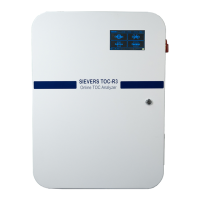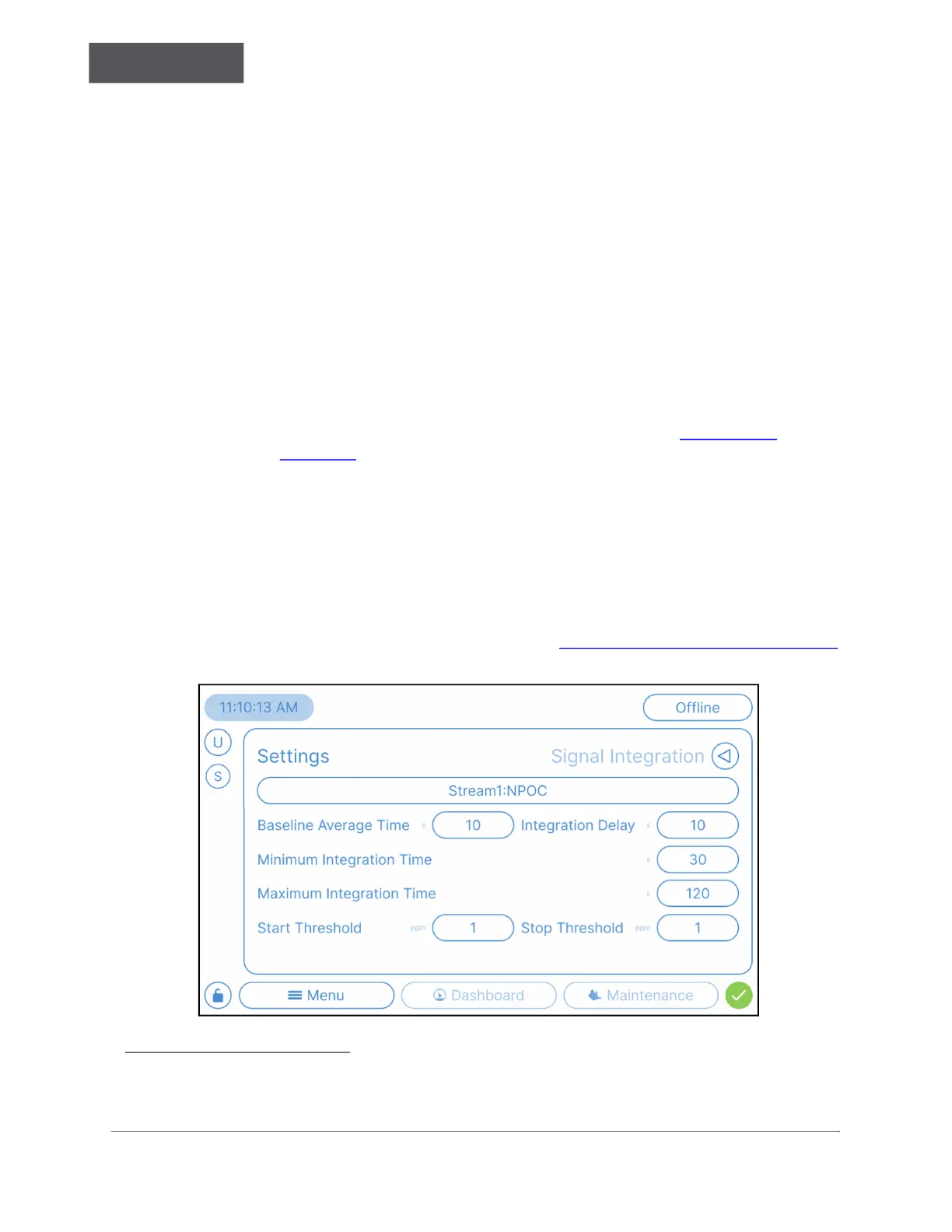BASIC ANALYZER OPERATION
Chapter 4
............
Sievers TOC-R3 Operation and Maintenance Manual
DLM 95000-01 EN Rev. A 121 © Veolia 2023
usual value. For BOD, the factor is often between 1.2 – 1.6 for influent and
2.0-3.0 for effluent.
► The Calibration is carried out with a corresponding standard (KHP). The
Calibration with a sample whose COD content is known facilitates the
process since the factor is already calibrated here.
• Alias — name of the correlation coefficient. Examples: BOD and COD. Maximum
of four characters.
• Average — select the number of Online measurements used to calculate the
average displayed on the Dashboard. This setting also affects any corresponding
Analog Output values, if using the Optional Communication Box.
► This setting displays the rolling average of the last number of selected
“Repetitions”, and displays/reports the result on the Dashboard.
► This option is also called “Data Smoothing”. Sievers recommends using
this setting when using the Auto Rinse feature or when using a Two-
Stream enabled Analyzer. For more information, see “Rinsing” on
page 130.
Signal Integration
Each Stream and Method must be set up separately.
Important! The Signal Integration settings should be determined prior to the final
Calibration. The default values are shown below. Optimization of these parameters is part
of Method Development. For more information, see “Method Development” on page 170.
Figure 4-19: Menu → Settings → Signal Integration (Defaults Displayed)
11. The User MUST determine their own specific correlation Factor buy running a long term
study typically between 200 and 500 data points. The numbers provided are just general
guidelines.

